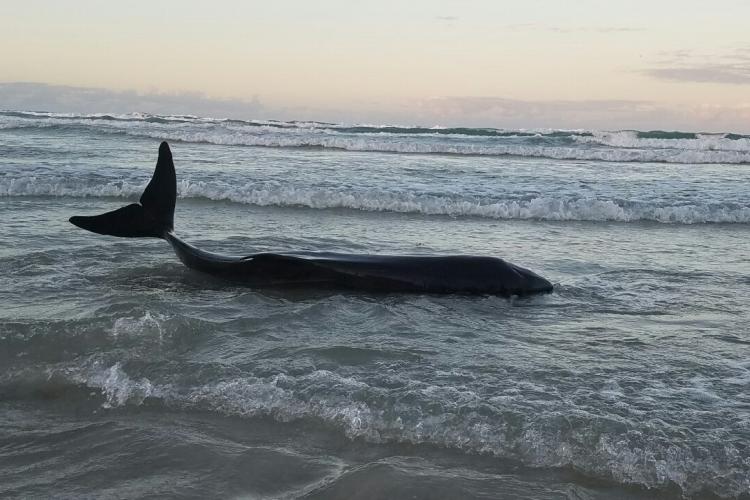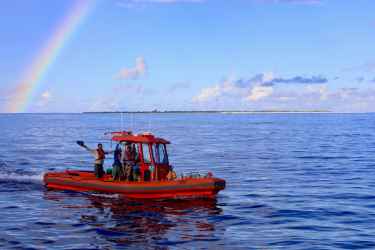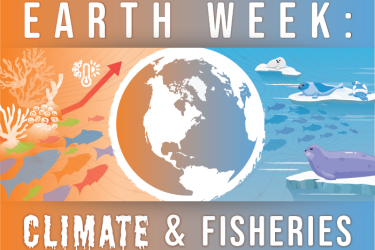Stranded marine mammals are often sick or injured. Despite the best efforts to aid them, sometimes the most compassionate option for trained and authorized responders to relieve the animal’s pain and suffering is euthanasia. The difficult decision to euthanize a compromised marine mammal is carefully and individually considered. Through a humane, respectful, and efficient procedure, experienced and qualified personnel may decide to euthanize stranded marine mammals in consultation with NOAA Fisheries and in accordance with nationally approved veterinary methods.
When a Marine Mammal Strands Alive
Marine mammals that strand alive–also called live-stranded animals–need medical evaluation and treatment by trained responders. These experts determine whether they can be returned to their natural habitat. Marine mammals strand for a variety of reasons, and every stranding event presents different challenges.
Organized stranding response by highly trained, experienced, and authorized personnel best serves the well-being of these animals and helps manage risks to public health and safety. The National Marine Mammal Stranding Network is authorized and overseen by NOAA Fisheries’ Marine Mammal Health and Stranding Response Program under the Marine Mammal Protection Act. The Stranding Network provides first response capabilities for cetaceans (whales, dolphins, and porpoises) and pinnipeds (seals and sea lions) that are sick, injured, in distress, or dead.
For live-stranded animals, Stranding Network responders perform a comprehensive health assessment following best practices and procedures developed over decades, which includes determining:
- Species
- Age
- Social requirement for the individual or species
- Behavior
- Physical condition
The Stranding Network may perform additional tests to evaluate the marine mammal’s health and the likelihood that it will survive after being released. Based on the results of the assessment, animals may be:
- Immediately returned to the wild (with or without brief medical treatment or supportive care) if they are in good health and may have stranded unintentionally for environmental or social requirements;
- Taken to an authorized rehabilitation facility for continued care if they are sick or injured, there is a chance they will respond well to treatment, and if there is an appropriate facility available;
- Euthanized in order to save a compromised animal from further suffering.
In some limited cases, due to human safety or logistical constraints, no response is possible, and the animal will die without intervention.
The Decision to Euthanize to Relieve Suffering
The decision to euthanize an animal is never taken lightly and is an action of last resort after all other options are exhausted. Just as people agonize over the decision to euthanize a beloved pet, it is difficult for professional Stranding Network responders to decide to euthanize a marine mammal.
The longer a fully aquatic animal, such as a cetacean, remains stranded on land or in shallow water, chances of survival decrease. This is the case even if the animal appears healthy at the time of stranding. Dolphins, porpoises, and whales are specially adapted to the buoyant support of water. Unlike in terrestrial mammals, cetaceans’ hearts, lungs, and other vital organs are not accustomed to the force of gravity and their own weight outside of water. Without euthanasia, some live-stranded animals may be subjected to hours or even days of pain and undue stress if left to die without intervention.
Despite our best efforts, saving live-stranded marine mammals is not always possible. When illness or injuries are severe and/or long-term treatment options are not available or unlikely to succeed, the overall prognosis for survival is considered poor. In such instances, the most humane course of action may be euthanasia to reduce the animal’s suffering.
The decision to euthanize is made by the responders in consultation with professional marine mammal biologists, veterinarians, and NOAA Fisheries staff. The euthanasia procedure is conducted humanely, respectfully, and efficiently by experienced and qualified personnel. It is done in accordance with nationally approved veterinary methods, in concurrence with the American Veterinary Medical Association guidelines. NOAA Fisheries has an oversight role for marine mammal strandings, and some actions (especially with threatened or endangered species) are authorized under a permit issued to the Marine Mammal Health and Stranding Response Program pursuant to the Marine Mammal Protection Act and Endangered Species Act.
The Euthanasia Process
The goal of euthanasia is to reduce an animal’s pain and suffering so that it may pass away in the most rapid and peaceful manner possible. To ensure a humane outcome, marine mammals are generally given a sedative to reduce pain and stress that often results in the animal becoming unconscious. Approved euthanasia methods are commonly classified into two main categories: chemical methods and physical methods. Euthanasia must be conducted by trained individuals and may require a specialized license to possess certain drugs or operate firearms.
Chemical Methods
Chemical (pharmaceutical) methods include injectable or inhalant drugs used by veterinarians to euthanize pets or livestock (e.g., tranquilizers, sedatives, pain killers). In the United States, injection of an authorized drug is the preferred and most common euthanasia method for live-stranded marine mammals because it is quick and effective.
Physical Methods
Physical methods include gunshot (there are animal size limitations), or exsanguination (blood draining) following deep sedation (a “two step method”). Physical methods are rarely used. They are generally reserved for remote or logistically challenging situations where the carcass must remain in the environment, or there is no access to euthanasia drugs or veterinary support.
Carcass Disposal
Disposing of a marine mammal carcass can pose a challenge. The most appropriate disposal method is determined on a case-by-case basis depending on the species, size of the animal, habitat, available resources, and euthanasia method.
Sometimes animals are euthanized with chemicals that can harm scavengers (e.g., birds, coyotes, sharks). When that happens, the carcass needs to be removed from the area and disposed of in a safe manner that prevents future risk to other wildlife or the environment. In these cases, disposal options include incineration, composting, or burial in a licensed landfill.
If an animal has been euthanized using potassium chloride (which has little risk of secondary poisoning) or by physical methods, there are additional disposal options. These include leaving the carcass in place, beach burial (where possible), or towing the carcass offshore.
Human Safety
Performing euthanasia is a technically challenging and potentially dangerous undertaking, especially with large whales. There are several human safety concerns associated with working close to a live-stranded animal. Euthanasia should only be carried out by an experienced and approved Stranding Network member or veterinarian who has worked with the species and is trained in appropriate euthanasia methods for that species. Human safety is always the top priority for NOAA Fisheries and the Stranding Network. Because of this, there are some situations, such as a live animal rolling in the surf or a free-swimming injured animal, where euthanasia cannot be safely conducted by the responders. In these cases, euthanasia would not be attempted unless conditions change.
What Can You Do?
The Marine Mammal Health and Stranding Response Program relies on reports of stranded marine mammals by the public to save animals in distress and understand causes of injuries and mortalities. If you come across a stranded marine mammal please report it to your regional 24/7 hotline:
Alaska: (877) 925-7773
Greater Atlantic: (866) 755-6622
Pacific Islands: (888) 256-9840
Southeast: (877) 942-5343
West Coast: (866) 767-6114
When reporting a stranded marine mammal, please include the following information:
- Date
- Location of stranding (including latitude and longitude)
- Number of animals
- Condition of the animal (alive or dead)
- Species (if known)
Photos or video from a safe and legal distance (note that regulations apply to certain species and areas) can also provide valuable information to Stranding Network responders. You can also download the Dolphin & Whale 911 Stranding App in the Apple App Store to help report a stranding.
Regional Programs






